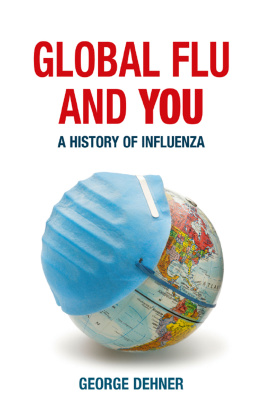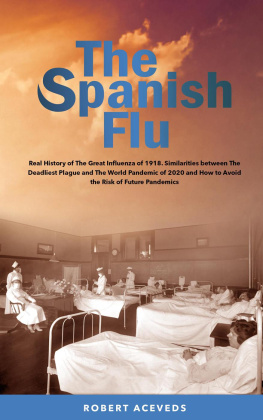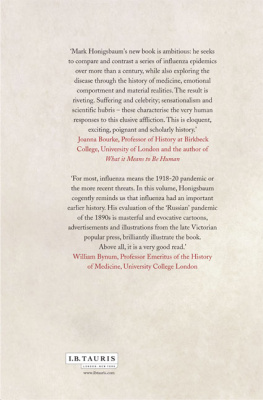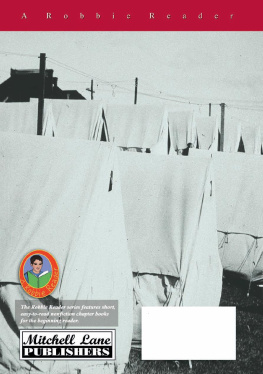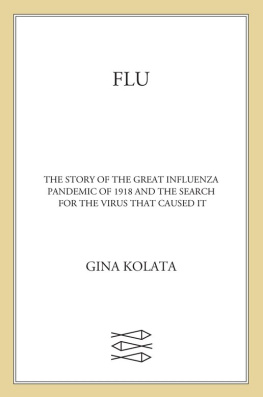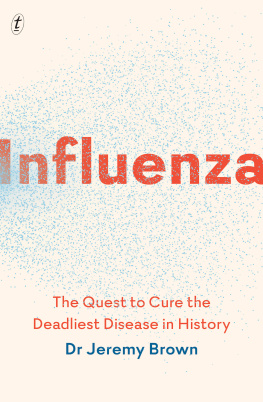Introduction
The world is now at the start of the 2009 influenza pandemic.
With these words, World Health Organization (WHO) director-general Margaret Chan officially declared on 11 June 2009 that the new circulating strain of influenza was spreading globally and uncontrollably. For the first time in 41 years, humanity faced the threat of a fast-moving, highly infectious new strain of influenza to which virtually nobody had immunity. Pandemic, from the Greek pan/demos, means all the people. Anybody and everybody could contract this new flu.
To influenza and public health experts the announcement came as no surprise; in fact, such an event was expected. Some researchers had spent their entire careers studying the virus and preparing to respond to just such a pandemic announcement. This pandemic planning and preparation had accelerated in the last few years as events in the field of influenza research seemed to herald exactly this type of pandemic declaration. To protect the public against the speedy virus required quick action and rapid decision-making. Public health professionals had been busily game-planning responses to a variety of scenarios.
But there was also something wrong about the announcement; or, at least, it was not the announcement that specialists had anticipated. Chans proclamation did not refer to the projected H5N1 avian in flu enza strain commonly known as Bird flu for which the public health community had been feverishly preparing over the preceding few years. Instead, Chan was declaring the official designation of the Swine flu pandemic of 2009 (subsequently officially For the influenza researchers, this pandemic was the wrong strainan H1N1 instead of the antici pated H5N1and from the wrong placeoriginating in North America rather than Southeast Asia. Thus, although Chans or some other director-generals announcement was expected, this specific declaration still came as a surprise to the scientific and medical community.
Chans announcement had been expected by the public, too. For the preceding few years they had been conditioned to be alert to and prepare for a pandemic of Bird flu. This message, amplified and indeed often distorted by various media outlets, had cautioned that the world was overdue for an influenza pandemic and that a likely candidateBird fluwas circulating in Asia, Europe, and even parts of Africa. Usually accompanied by the disclaimer it may not happen, popular discussions of a potential flu pandemic frequently outlined a series of dire predictions. Therefore, the public was prepared for the arrival of a pandemic of influenza, now recast as an emerging disease.
But what Chans announcement meant was not clear. The informed public had been repeatedly warned in the early years of the twenty-first century that Bird flu was highly virulent. Indeed, as of 7 June 2012, there were a total of 606 confirmed cases of Bird flu, and 357 of these infectees had died. This equates to a mortality rate of nearly 60 per cent, an extraordinarily high and frightening case fatality rate for an influenza infection. Fortunately, thus far Bird flu had not adapted successfully for human transmission. The unfortunate victims had all contracted their infection directly from contact with infected birds.
The pandemic announced by Chan was not the feared Bird flu, however, but a type of swine flu. This new virus had appeared unexpectedly and spread very rapidly around the globe. The first cases were identified on 17 April 2009, and just eight weeks later, the WHO announced that Swine flu was a pandemic.Was Swine flu like Bird flu? Worse? Milder? What was the public to do? Unfortunately, nobody could say for sure.
Over the ensuing few months the meaning of the Swine flu pandemic of 2009 became clearer. The novel virus spread rapidly in both the southern and northern hemispheres. Vaccine manufacturers labored to produce doses to protect the public. Partly due to production and distribution snafus, but mostly because of the sheer speed of viral spread, the number of people infected with the affliction rose steeply, crested, and began to subside before sufficient stocks of vaccine became available to the general public. Vast stores of vaccine, purchased by major governmental organizations, sat in warehouses and stockrooms because the pandemic had already passed by or the public was uninterested in receiving the protective shots. A significant quantity reached their expiration dates and ended up being destroyed.
Although it remains too early fully to count the costs of the Swine flu pandemic of 2009, it is abundantly clear that overall they were relatively low. Some have projected that the mortality toll was even lower than the average death rate for seasonal influenza. Even those who were not conspiracy-minded were left with questions in the wake of the pandemic. Where does flu come from? Is it really a big threat to human populations? Should I be concerned about an influenza pandemic, and, if so, why?
This book seeks to address these questions through providing some historical perspective on the pandemic of 2009 and the current concerns with Bird flu. All the events of 200910the rapid spread of the infection, the steep rise and sudden drop in cases, the tardy vaccine production efforts, the stocks of unsold vaccine, and even the charges of conspiracy in characterizing the pandemichave occurred before. Although the strain that spread epidemically in 200910 might be new, influenza pandemics in the human population are not. In fact, the influenza virus has likely been infecting human communities for thousands of years.
As we shall see, influenza is not actually a human disease, or at least was not originally. Instead, it is a bird disease that periodically is transmitted to humans (the technical term is a zoonosis: an animal disease that infects humans). The normal hosts that the virus has evolved to infiltrate, known as its animal reservoir, are the numerous species of aquatic waterfowl such as ducks and geese. At various times in history, the animal virus acquired the necessary evolutionary changes that enabled it to be transmitted to humans and cause infection. The process is fairly complex and will be detailed in the following pages, but it is when this animal disease gains the ability to be exchanged from human to human that epidemics and pandemics emerge. It is the adapted ability to efficiently leap from infected individual to non-infected individual, and the resulting sickness and death the infections occasion, that makes influenza such a threat to public health. When a new influenza virus begins readily to spread between humans, public health professionals, scientists, and medical researchers become concerned because they know something that many of the public do not: influenza is a very costly disease, both in economic and in human terms. It is these costs that prompt officials to go to such great lengths to protect against the disease.

